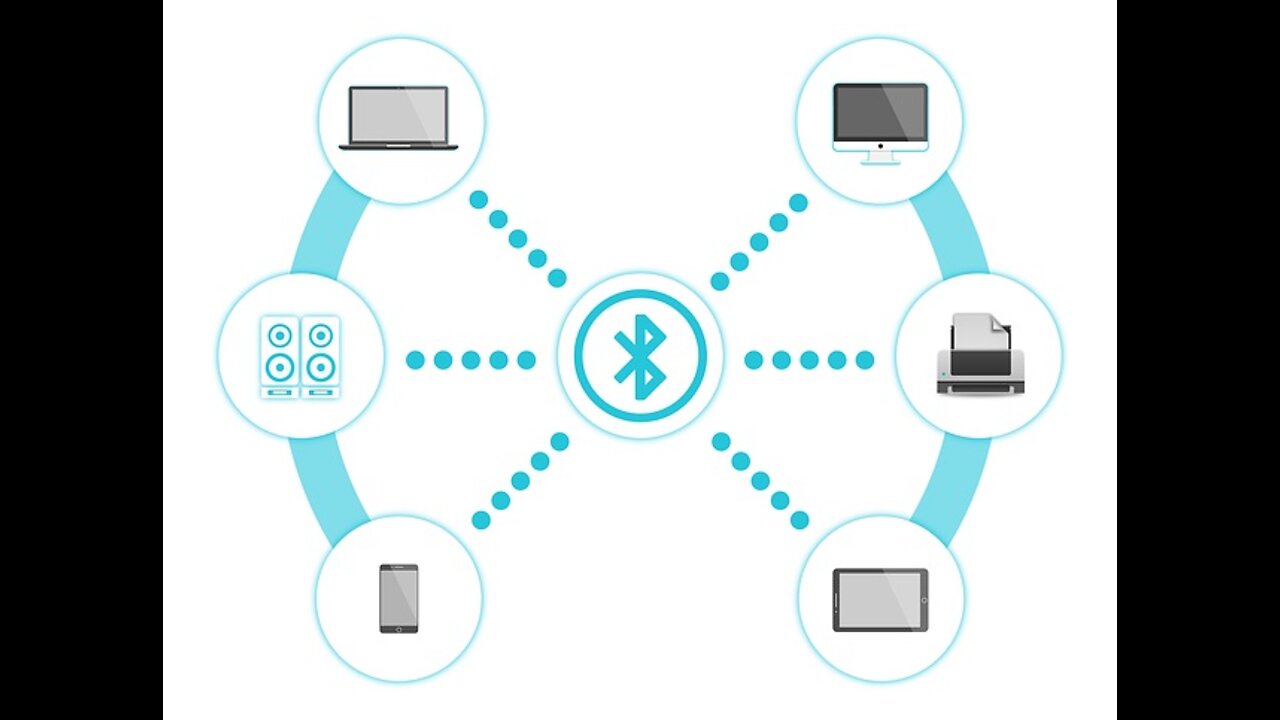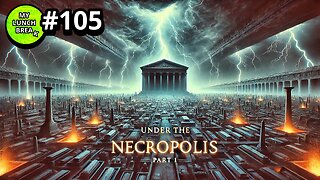Premium Only Content

Bluetooth Challenge: Microchipped NPCs Gang-Stalking Targeted Individuals
Bots in the Matrix: Existing, Observing or Playing The Game of Life?
Are NPCs (Non-Player Characters) Chipped?
NPC is an acronym that stands for "non-player character." A non-player character is a character in a game that's not controlled by the person playing the game, nor by any sort of AI. They're not usually meant to act like real people.
🎮 Controller: Ready Player One
🎯 Are Targeted Individuals being Gang-stalked by NPC Bots?
🎬 If you identify as a Targeted Individual, you know what it is to walk outside your home and be greeted with street theater 🎭. They just appear out of nowhere. They usually say the same thing to you like in the Truman Show. You might as well be repeating the same day over again like in Groundhogs Day.
🎯 Have Gang-stalkers been hijacked? Are they hooked up to the hive mind receiving orders from AI?
💾 If these NPC Gang-stalkers are chipped,
this would explain why they lined up for the 💉 1, 2, 3, 4 times (In my Count Dracula voice). 🧛♂️
They were probably getting upgrades for the new 5D reality.
📟 Have you taken the Bluetooth Challenge?
💻 Many people are reporting MAC addresses being recognized by their Android Bluetooth devices. These devices are unable to pair to the addresses but that could all change when Skynet 📡 is activated this summer.
🙄What I’ve noticed so far about these addresses…
All letters used are between A-F.
Alpha
Bravo
Charlie
Delta
Echo
Foxtrot
The letters I and O are not used.
All numbers used 0-9.
12 Hexadecimal Digits
6 Bytes
💉Example Addresses Below
10:B6:0A:D1:3B:2C (6 Octets)
10:B6:0A (3 Octets) D1:3B:2C (3 Octets)
42:d0:1a:e3:e7:32
42:d0:1a (Provided by IEEE) OUI
e3:e7:32 (Provided by Manufacturer) NIC
OUI Organizationally Unique Identifier
NIC Network Interface Controller
📟 The above addresses are locally administered, and cannot be searched for by the Universally administered address (UAA) register.
💣 Random Mac Address Generator
https://www.macvendorlookup.com/mac-address-generator
I used the above website to generate 50 random Mac addresses; uppercase, separated by colons just like they appear on a cellphone.
Are what we’re picking up, chipped people are nano bots generating random Mac addresses?
BE:38:5D:CC:9E:B3
22:81:AC:1D:34:43
F8:60:53:9D:B6:11
E3:A7:7A:23:6E:57
7A:AA:89:CD:30:38
A6:DF:C8:CB:1F:B9
0A:10:2D:51:8F:BF
FC:2E:9B:2A:97:63
74:A8:F3:0C:DB:F8
A1:F2:70:0D:E5:A4
E6:08:FE:75:EA:8D
95:59:4F:92:2D:17
21:FE:BF:5B:6A:D1
C5:00:55:83:9F:BC
36:39:E7:BB:0D:2F
E5:10:39:1B:D8:E0
8A:4B:51:CC:CE:DC
9E:D6:4A:B5:7A:7E
71:B5:71:6E:A0:9D
A0:10:C2:0F:6B:89
DF:45:15:79:4C:BF
DB:90:89:57:C0:68
C5:79:DC:38:3A:40
A8:12:4D:63:C0:E0
7C:87:7B:03:6E:09
F5:1B:5A:C5:66:47
73:55:6C:02:6C:87
E4:30:51:FB:E0:EE
2D:7E:15:59:25:6D
12:B9:21:AE:BB:BD
9F:44:59:E8:CA:F9
0B:43:3D:FE:50:E3
2C:6F:5A:F1:1B:35
8E:9D:3C:26:8C:20
4F:EF:C9:13:BC:DA
E7:B7:5B:0C:9E:D5
B5:08:18:16:E4:18
D2:35:EB:2F:88:1F
55:0F:69:E9:73:FC
9D:E6:C2:1C:92:70
89:42:1F:02:FE:8C
C8:F2:CF:A1:8D:D4
58:AD:4F:AE:D6:DC
DB:F9:3A:40:F7:86
5E:3E:1B:30:1A:15
2D:5F:E0:C8:7B:5E
F2:39:C1:4F:C7:D1
A1:F1:A8:BF:12:70
E9:3B:36:1F:9E:EF
69:2B:54:BE:73:2E
(Wikipedia Start)
Addresses can either be universally administered addresses (UAA) or locally administered addresses (LAA). A universally administered address is uniquely assigned to a device by its manufacturer. The first three octets (in transmission order) identify the organization that issued the identifier and are known as the organizationally unique identifier (OUI).
The remainder of the address (three octets for EUI-48 or five for EUI-64) are assigned by that organization in nearly any manner they please, subject to the constraint of uniqueness. A locally administered address is assigned to a device by software or a network administrator, overriding the burned-in address for physical devices.
Locally administered addresses are distinguished from universally administered addresses by setting (assigning the value of 1 to) the second-least-significant bit of the first octet of the address. This bit is also referred to as the U/L bit, short for Universal/Local, which identifies how the address is administered.[7][8] If the bit is 0, the address is universally administered, which is why this bit is 0 in all UAAs. If it is 1, the address is locally administered. In the example address 06-00-00-00-00-00 the first octet is 06 (hexadecimal), the binary form of which is 00000110, where the second-least-significant bit is 1. Therefore, it is a locally administered address.[9] Even though many hypervisors manage dynamic MAC addresses within their own OUI, often it is useful to create an entire unique MAC within the LAA range.
A media access control address (MAC address) is a unique identifier assigned to a network interface controller (NIC) for use as a network address in communications within a network segment. This use is common in most IEEE 802 networking technologies, including Ethernet, Wi-Fi, and Bluetooth. Within the Open Systems Interconnection (OSI) network model, MAC addresses are used in the medium access control protocol sublayer of the data link layer. As typically represented, MAC addresses are recognizable as six groups of two hexadecimal digits, separated by hyphens, colons, or without a separator.
MAC addresses are primarily assigned by device manufacturers, and are therefore often referred to as the burned-in address, or as an Ethernet hardware address, hardware address, or physical address. Each address can be stored in hardware, such as the card's read-only memory, or by a firmware mechanism. Many network interfaces, however, support changing their MAC address. The address typically includes a manufacturer's organizationally unique identifier (OUI). MAC addresses are formed according to the principles of two numbering spaces based on Extended Unique Identifiers (EUI) managed by the Institute of Electrical and Electronics Engineers (IEEE): EUI-48, which replaces the obsolete term MAC-48,[1] and EUI-64.
Network nodes with multiple network interfaces, such as routers and multilayer switches, must have a unique MAC address for each NIC in the same network. However, two NICs connected to two different networks can share the same MAC address.
(Wikipedia End)
-
 40:01
40:01
CarlCrusher
18 hours agoSkinwalker Encounters in the Haunted Canyons of Magic Mesa - ep 4
31.1K2 -
 59:44
59:44
PMG
1 day ago $3.32 earned"BETRAYAL - Johnson's New Spending Bill EXPANDS COVID Plandemic Powers"
43.9K14 -
 6:48:50
6:48:50
Akademiks
16 hours agoKendrick Lamar and SZA disses Drake and BIG AK? HOLD UP! Diddy, Durk, JayZ update. Travis Hunter RUN
166K28 -
 11:45:14
11:45:14
Right Side Broadcasting Network
9 days agoLIVE REPLAY: TPUSA's America Fest Conference: Day Three - 12/21/24
350K28 -
 12:19
12:19
Tundra Tactical
16 hours ago $12.92 earnedDaniel Penny Beats Charges in NYC Subway Killing
69K13 -
 29:53
29:53
MYLUNCHBREAK CHANNEL PAGE
1 day agoUnder The Necropolis - Pt 1
158K52 -
 2:00:10
2:00:10
Bare Knuckle Fighting Championship
3 days agoCountdown to BKFC on DAZN HOLLYWOOD & FREE LIVE FIGHTS!
59.7K3 -
 2:53:01
2:53:01
Jewels Jones Live ®
1 day agoA MAGA-NIFICENT YEAR | A Political Rendezvous - Ep. 103
153K37 -
 29:54
29:54
Michael Franzese
19 hours agoCan Trump accomplish everything he promised? Piers Morgan Article Breakdown
138K80 -
 2:08:19
2:08:19
Tactical Advisor
23 hours agoThe Vault Room Podcast 006 | Farwell 2024 New Plans for 2025
200K11